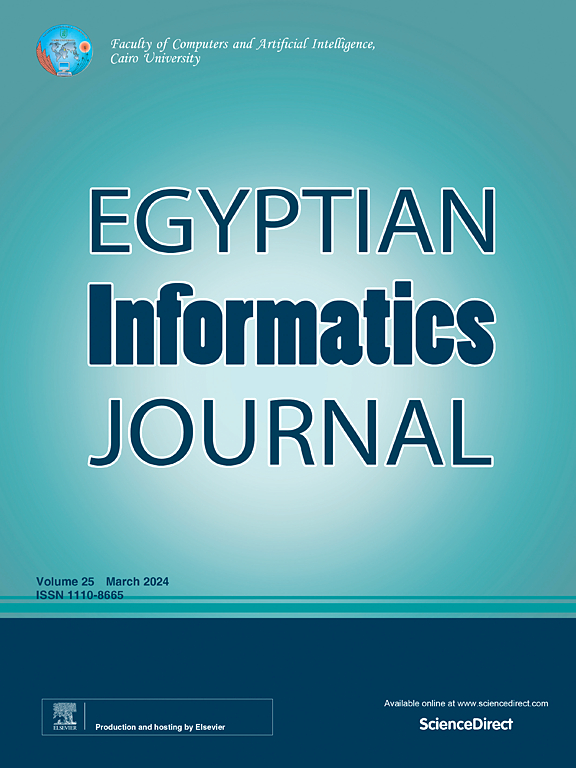Digital image super-resolution reconstruction method based on stochastic gradient descent algorithm
IF 4.3
3区 计算机科学
Q1 COMPUTER SCIENCE, ARTIFICIAL INTELLIGENCE
引用次数: 0
Abstract
Digital image super-resolution (SR) techniques have gained significant attention in computational imaging for reconstructing high-quality images from low-resolution inputs. Traditional SR methods often struggle with preserving fine details, texture consistency, and edge sharpness while maintaining computational efficiency, limiting their practical applications in real-time systems. The research proposes an Adaptive Dynamic Efficient Parameter Tuning for Super-Resolution (ADEPT-SR) framework based on an optimized stochastic gradient descent (SGD) algorithm. The technique transforms low-resolution (LR) images into high-resolution (HR) counterparts, addressing fundamental limitations in imaging hardware. ADEPT-SR implements an adaptive SGD framework with momentum-based parameter optimization to minimize reconstruction error between predicted and ground-truth HR images. The key innovation in ADEPT-SR lies in a hybrid loss function combining structural similarity index measure (SSIM) and perceptual loss with dynamic weighting that adjusts during training iterations. The approach enables superior edge preservation and texture reconstruction compared to conventional methods. An adaptive learning rate schedule dynamically responds to local optimization landscapes, reducing convergence time by 37 % while avoiding local minima. ADEPT-SR offers significant applications in medical imaging, satellite imagery analysis, surveillance systems, and consumer electronics, where hardware limitations constrain native resolution. Experimental validation across standard benchmark datasets demonstrates that ADEPT-SR achieves a peak signal-to-noise ratio (PSNR) improvement of 1.8 dB over standard bicubic interpolation and 0.7 dB over recent deep learning approaches for a 4 × upscaling factor. The method reduces computational complexity by 43 % compared to deep learning methods while maintaining visual quality improvement.
基于随机梯度下降算法的数字图像超分辨率重建方法
数字图像超分辨率(SR)技术在计算成像领域受到广泛关注,用于从低分辨率输入重建高质量图像。传统的SR方法通常难以在保持计算效率的同时保持精细细节、纹理一致性和边缘清晰度,这限制了它们在实时系统中的实际应用。研究提出了一种基于优化随机梯度下降(SGD)算法的超分辨率(ADEPT-SR)框架自适应动态高效参数整定方法。该技术将低分辨率(LR)图像转换为高分辨率(HR)图像,解决了成像硬件的基本限制。ADEPT-SR实现了一个基于动量的参数优化的自适应SGD框架,以最小化预测和真实HR图像之间的重建误差。ADEPT-SR的关键创新在于一个混合损失函数,该函数结合了结构相似指数度量(SSIM)和感知损失,并在训练迭代过程中进行动态加权调整。与传统方法相比,该方法具有优越的边缘保存和纹理重建功能。自适应学习率调度动态响应局部优化景观,减少37%的收敛时间,同时避免局部最小值。ADEPT-SR在医学成像、卫星图像分析、监控系统和消费类电子产品中提供了重要的应用,这些领域的硬件限制限制了原生分辨率。跨标准基准数据集的实验验证表明,与标准双三次插值相比,ADEPT-SR的峰值信噪比(PSNR)提高了1.8 dB,比最近的深度学习方法提高了0.7 dB,放大系数提高了4倍。与深度学习方法相比,该方法在保持视觉质量改善的同时,将计算复杂度降低了43%。
本文章由计算机程序翻译,如有差异,请以英文原文为准。
求助全文
约1分钟内获得全文
求助全文
来源期刊

Egyptian Informatics Journal
Decision Sciences-Management Science and Operations Research
CiteScore
11.10
自引率
1.90%
发文量
59
审稿时长
110 days
期刊介绍:
The Egyptian Informatics Journal is published by the Faculty of Computers and Artificial Intelligence, Cairo University. This Journal provides a forum for the state-of-the-art research and development in the fields of computing, including computer sciences, information technologies, information systems, operations research and decision support. Innovative and not-previously-published work in subjects covered by the Journal is encouraged to be submitted, whether from academic, research or commercial sources.
 求助内容:
求助内容: 应助结果提醒方式:
应助结果提醒方式:


